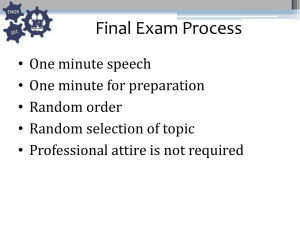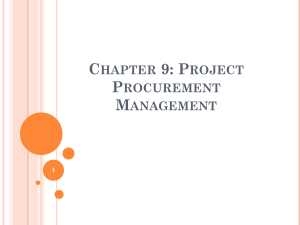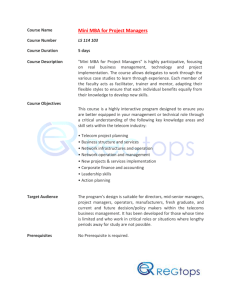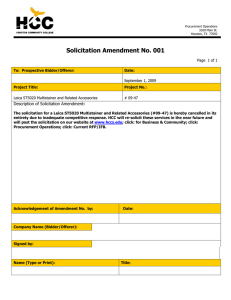Review Project Procurement Management (PMBOK KA-9)
advertisement
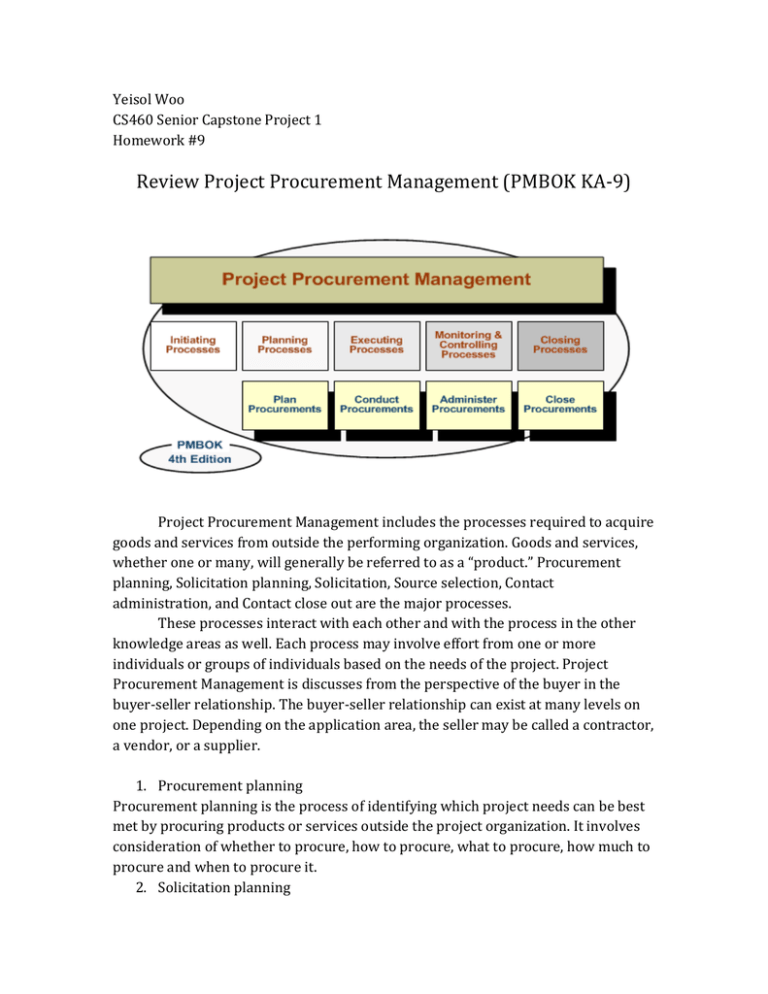
Yeisol Woo CS460 Senior Capstone Project 1 Homework #9 Review Project Procurement Management (PMBOK KA-9) Project Procurement Management includes the processes required to acquire goods and services from outside the performing organization. Goods and services, whether one or many, will generally be referred to as a “product.” Procurement planning, Solicitation planning, Solicitation, Source selection, Contact administration, and Contact close out are the major processes. These processes interact with each other and with the process in the other knowledge areas as well. Each process may involve effort from one or more individuals or groups of individuals based on the needs of the project. Project Procurement Management is discusses from the perspective of the buyer in the buyer-seller relationship. The buyer-seller relationship can exist at many levels on one project. Depending on the application area, the seller may be called a contractor, a vendor, or a supplier. 1. Procurement planning Procurement planning is the process of identifying which project needs can be best met by procuring products or services outside the project organization. It involves consideration of whether to procure, how to procure, what to procure, how much to procure and when to procure it. 2. Solicitation planning Solicitation planning involves preparing the documents needed to support solicitation. 3. Solicitation Solicitation involves obtaining information (bids and proposals) from prospective sellers on how project needs can be met. Most of the actual effort in this process is expended by the prospective sellers, normally at no cost to the project. 4. Source selection Source selection involves the receipt of bids or proposals and the application of the evaluation criteria to select a provider. This process is straightforward: Price may be the primary determinant for an off –the-shelf item, but the lowest proposed price may not be the lowest cost if the seller proves unable to deliver the product in a timely manner. Proposals are often separated into technical and commercial sections with each evaluated separately. Multiple sources may be required for critical products. The tools and techniques described below may be used singly or in combination. On major procurement items, this process may be iterated. A short list of qualified sellers will be selected based on a preliminary proposal, and then a more detailed evaluation will be conducted based on a more detailed and comprehensive proposal 5. Contract administration Contract administration is the process of ensuring that the seller’s performance meets contractual requirements. On larger projects with multiple product and service provides, a key aspect of contract administration is managing the interfaces among the various providers. The legal nature of the contractual relationship makes it imperative that the project team be acutely aware of the legal implications of actions taken when administering the contract. Contract administration includes application of the appropriate project management processes to the contractual relationship and integration of the outputs from these processes into the overall management of the project. This integration and coordination will often occur at multiple levels when there are multiple sellers and multiple products involved. 6. Contract close-out Contract close-out is similar to administrative closure in that it involves both product verification and administrative close-out. The contract terms and conditions may prescribe specific procedures for contract close-out. Early termination of a contract is a special case of contract close-out.
